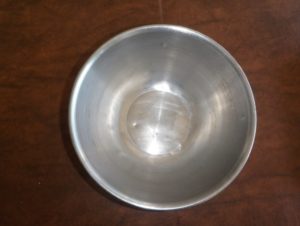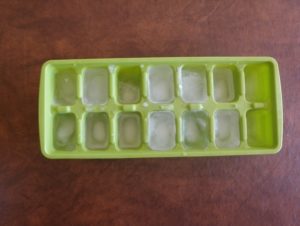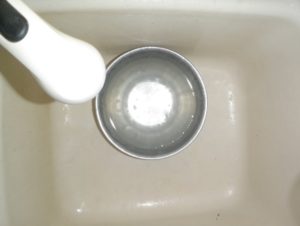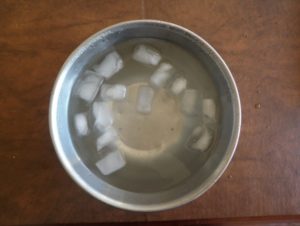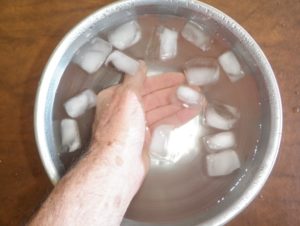BBA Clin. 2016 Oct 1;6:113-124. eCollection 2016 Dec.Shining light on the Head: Photobiomodulation for brain disorders. Hamblin MR.
Photobiomodulation (PBM) describes the use of red or near-infrared light to stimulate, heal, regenerate, and protect tissue that has either been injured, is degenerating, or else is at risk of dying. One of the organ systems of the human body that is most necessary to life, and whose optimum functioning is most worried about by humankind in general, is the brain. The brain suffers from many different disorders that can be classified into three broad groupings: traumatic events (stroke, traumatic brain injury, and global ischemia), degenerative diseases (dementia, Alzheimer’s and Parkinson’s), and psychiatric disorders (depression, anxiety, post traumatic stress disorder). There is some evidence that all these seemingly diverse conditions can be beneficially affected by applying light to the head. There is even the possibility that PBM could be used for cognitive enhancement in normal healthy people. In this transcranial PBM (tPBM) application, near-infrared (NIR) light is often applied to the forehead because of the better penetration (no hair, longer wavelength). Some workers have used lasers, but recently the introduction of inexpensive light emitting diode (LED) arrays has allowed the development of light emitting helmets or “brain caps”. This review will cover the mechanisms of action of photobiomodulation to the brain, and summarize some of the key pre-clinical studies and clinical trials that have been undertaken for diverse brain disorders.
Study of Vielight Using Subjects with Dementia Saltmarche A.E., Naeser M.A., Ho K.F., Hamblin M.R., Lim L. Alzheimer’s Association International Conference, Toronto, Canada. 2016. Significant Improvement in Cognition after Transcranial and Intranasal Photobiomodulation: A Controlled, Single-Blind Pilot Study in Participants with Dementia
A study with 19 subjects that took the form of a randomized placebo-controlled trial investigated the effect of the Vielight Neuro system (a combination of tPBM and intranasal PBM) on patients with dementia and mild cognitive impairment. This was a controlled single blind pilot study in humans to investigate the effects of PBM on memory and cognition. The 19 participants with impaired memory and/or cognition were randomized into active and sham treatments over 12 weeks with a 4-week no-treatment follow-up period.
The protocol involved in-clinic use of a combined transcranial-intranasal PBM device; and at-home use of an intranasal-only PBM device and participants/ caregivers noted daily experiences in a journal. Active participants with moderate to severe impairment (MMSE scores 5–24) showed significant improvements (5-points MMSE score) after 12 weeks. There was also a significant improvement in ADAS-cog scores (see below). They also reported better sleep, fewer angry outbursts and decreased anxiety and wandering. Declines were noted during the 4-week no-treatment follow-up period. Participants with mild impairment to normal (MMSE scores of 25 to 30) in both the active and sham sub-groups showed improvements. No related adverse events were reported.
An interesting paper from Russia described the use of intravascular PBM to treat 89 patients with AD who received PBM (46 patients) or standard treatment with memantine and rivastigmine (43 patients). The PBM consisted of threading a fiber-optic through a cathéter in the fémoral artery and advancing it to the distal site of the anterior and middle cerebral arteries and delivering 20 mW of red laser for 20–40 min. The PBM group had improvement in cerebral microcirculation leading to permanent (from 1 to 7 years) reduction in dementia and cognitive recovery.
Maloney R., Shanks S., Maloney J. The application of low-level laser therapy for the symptomatic care of late stage Parkinson’s disease: a non-controlled, non-randomized study (abstract) Lasers Surg. Med. 2010;185
This is a clinical report of photobiomodulation for Parkinson’s disease in humans. Eight patients between 18 and 80 years with late stage PD participated in a non-controlled, non-randomized study. Participants received photobiomodulation treatments of the head designed to deliver light to the brain stem, bilateral occipital, parietal, temporal and frontal lobes, and treatment along the sagittal suture.
A Visual Analog Scale (VAS), was used to record the severity of their symptoms of balance, gait, freezing, cognitive function, rolling in bed, and difficulties with speech pre-procedure and at study endpoint with 10 being most severe and 0 as no symptom.
Compared with baseline, all participants demonstrated a numerical improvement in the VAS from baseline to study endpoint. A statistically significant reduction in VAS rating for gait and cognitive function was observed. Further, freezing and difficulty with speech ratings were significantly better.
Phys Med Biol. 2015 Apr 7;60(7):2921-37. doi: 10.1088/0031-9155/60/7/2921. Epub 2015 Mar 19.
Red and NIR light dosimetry in the human deep brain. Pitzschke A, Lovisa B, Seydoux O, Zellweger M, Pfleiderer M, Tardy Y, Wagnières G.
Photobiomodulation (PBM) appears promising to treat the hallmarks of Parkinson’s Disease (PD) in cellular or animal models. We measured light propagation in different areas of PD-relevant deep brain tissue during transcranial, transsphenoidal illumination (at 671 and 808 nm) of a cadaver head and modeled optical parameters of human brain tissue using Monte-Carlo simulations. Gray matter, white matter, cerebrospinal fluid, ventricles, thalamus, pons, cerebellum and skull bone were processed into a mesh of the skull (158 × 201 × 211 voxels; voxel side length: 1 mm). Optical parameters were optimized from simulated and measured fluence rate distributions. The estimated μeff for the different tissues was in all cases larger at 671 than at 808 nm, making latter a better choice for light delivery in the deep brain. Absolute values were comparable to those found in the literature or slightly smaller. The effective attenuation in the ventricles was considerably larger than literature values. Optimization yields a new set of optical parameters better reproducing the experimental data. A combination of PBM via the sphenoid sinus and oral cavity could be beneficial. A 20-fold higher efficiency of light delivery to the deep brain was achieved with ventricular instead of transcranial illumination. Our study demonstrates that it is possible to illuminate deep brain tissues transcranially, transsphenoidally and via different application routes. This opens therapeutic options for sufferers of PD or other cerebral diseases necessitating light therapy.
Photobiomodulation, Photomedicine, and Laser SurgeryVol. 37, No. 3 Photobiomodulation—Original Research Effects of Home Photobiomodulation Treatments on Cognitive and Behavioral Function, Cerebral Perfusion, and Resting-State Functional Connectivity in Patients with Dementia: A Pilot Trial Linda L. Chao
Objective: To examine the effects of transcranial and intranasal photobiomodulation (PBM) therapy, administered at home, in patients with dementia.
Background: This study sought to replicate and build upon a previously published case series report describing improved cognitive function in five patients with mild-to-moderate dementia after 12 weeks of transcranial and intranasal near-infrared (NIR) PBM therapy.
Materials and methods: Eight participants (mean age: 79.8 ± 5.8 years old) diagnosed with dementia by their physicians were randomized to 12 weeks of usual care (UC, n = 4) or home PBM treatments (n = 4). The NIR PBM treatments were administered by a study partner at home three times per week with the Vielight Neuro Gamma device. The participants were assessed with the Alzheimer’s Disease Assessment Scale-cognitive (ADAS-cog) subscale and the Neuropsychiatric Inventory (NPI) at baseline and 6 and 12 weeks, and with arterial spin-labeled perfusion magnetic resonance imaging (MRI) and resting-state functional MRI at baseline and 12 weeks.
Results: At baseline, the UC and PBM groups did not differ demographically or clinically. However, after 12 weeks, there were improvements in ADAS-cog (group × time interaction: F1,6 = 16.35, p = 0.007) and NPI (group × time interaction: F1,6 = 7.52, p = 0.03), increased cerebral perfusion (group × time interaction: F1,6 = 8.46, p < 0.03), and increased connectivity between the posterior cingulate cortex and lateral parietal nodes within the default-mode network in the PBM group.
Conclusions: Because PBM was well tolerated and associated with no adverse side effects, these results support the potential of PBM therapy as a viable home treatment for individuals with dementia.
Mil Med. 2019 Mar 22. pii: usz037. doi: 10.1093/milmed/usz037. [Epub ahead of print] Improvements in Gulf War Illness Symptoms After Near-Infrared Transcranial and Intranasal Photobiomodulation: Two Case Reports. Chao LL.
At least one-fourth of US veterans who served in the 1990-1991 Gulf War (GW) are affected by the chronic symptomatic illness known as Gulf War illness (GWI). This condition typically includes some combination of fatigue, headaches, cognitive dysfunction, musculoskeletal pain, and respiratory, gastrointestinal and dermatologic complaints. To date, effective treatments for GWI have been elusive. Photobiomodulation (PBM) describes the non-pharmacological, non-thermal use of light to stimulate, heal, and protect tissue that has either been injured, is degenerating, or else is at risk of dying. Significant benefits have been reported following application of transcranial PBM to humans with acute stoke, traumatic brain injury (TBI), and dementia. This report describes the first documentation of improved GWI symptoms in two GW veterans following 12 weeks of PBM treatments.
Is It Time to Consider Photobiomodulation As a Drug Equivalent? Tiina Karu, PhD, DrSci
The question of whether photobiomodulation should be used as a drug equivalent arose in my mind after listening to presentations at the recent conference of the World Association for Laser Therapy (WALT)-2012 (Gold Cost City, Australia), and later at home when searching MEDLINE® for the years 2009–2012. Photobiomodulation (earlier terms: low level laser therapy, LLLT, laser biostimulation) has been used in clinical practice for >40 years by now, and its action mechanisms on cellular and molecular levels have been studied for >30 years. Enthusiastic medical specialists successfully used photobiomodulation in treating healing-resistant wounds and ulcers (e.g., chronic diabetic ulcers), in pain management, and in spinal cord and nervous system injuries when other methods had had limited success. However, photobiomodulation is still not a part of mainstream medicine. The goal of the present Editorial is to highlight some important recent developments in clinical applications and in studies of cellular and molecular mechanisms behind the clinical findings.
One of the impressive and perspective challenges for photobiomodulation is its use in cases of Parkinson’s disease. Research in recent years evidenced that neuroprotective treatment with red and near infrared radiation (NIR) prevented mitochondrial dysfunction and dopamine loss in Parkinson’s disease patients.2 In another set of experiments, NIR normalized mitochondrial movement and axon transport, as well as stimulating respiration in cytoplasmic hybrid (“cybrid”) neurons. It is important to recall that reduced axonal transport contributes substantially to the degeneration of neuronal processes in Parkinson’s disease.
